Iceland is well known as the land of ice and fire, a place where the landscapes truly reflect this description. With towering glaciers and bubbling volcanoes littered all over the island. It really is no wonder that Iceland finds itself a firm spot on most traveller’s bucket list. Especially those with a taste for adventure and a love for the natural world.
We truly believe that the best way to experience Iceland in all its glory, is by renting a campervan and hitting the road. The ring road offers road trippers the very best of Iceland’s unique environment. Showcasing why Iceland really is one of the most beautiful countries in the world! We recently spent 7 days on the ring-road, in a campervan and had the adventure of a lifetime. In this guide we are going to detail everything you need to know to ensure that you have the ultimate Iceland road trip experience.
Disclaimer: This post may contain affiliate links. At no extra cost to you, we receive a small commission on purchases made through these links. By doing so, you are supporting our blog and helping us to continue writing free travel guides for you. Thank you for your continued support.
Furthermore, this post is written in collaboration with Camper Days and PLAY Airlines. Who provided a campervan and flights for this adventure. Therefore, a huge thank you goes out to them.
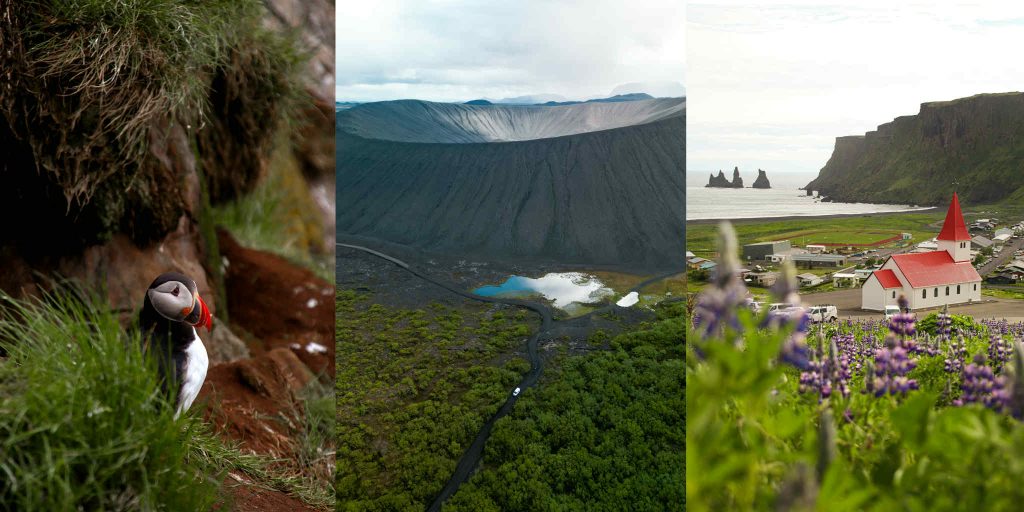
When is the best time to visit Iceland?
The best time to visit Iceland will greatly depend on what you want to get out of your experience. But in order to help you decide, it’s worth knowing a few factors that may influence your decision first:
Winter travel
Firstly, if you travel to Iceland in winter (November – March) then be prepared to have much shorter days. Iceland is located in the far north and therefore experiences dark nights within these months. The sun can rise as late as 11:30am and as early as 3:30pm for sunset. This will have an impact on the amount of time you will have for exploring and driving.
Other factors to consider with winter travel is the type of vehicle you choose. It is imperative that you make sure you rent a vehicle that is equipped for the journey you are taking. All rental companies will provide you with either snow chains or have tyres on their vehicles equipped for the winter conditions.
Moreover, Iceland’s weather is unpredictable all year round. However, especially in winter you are subject to much harsher weather conditions. Which may affect your ability to explore and travel around the country. Roads in Iceland often close due to bad weather, therefore it is important that you stay informed throughout your trip.
Travelling to Iceland in winter offers a wild adventure. To see the country’s most beautiful landscapes blanketed in snow, will be nothing short of magical. Activities such as ice caving, skiing, snowmobiling and northern light spotting are only available during the winter months. Therefore, it is worth considering which activities you are keen to do, before planning your trip to Iceland.
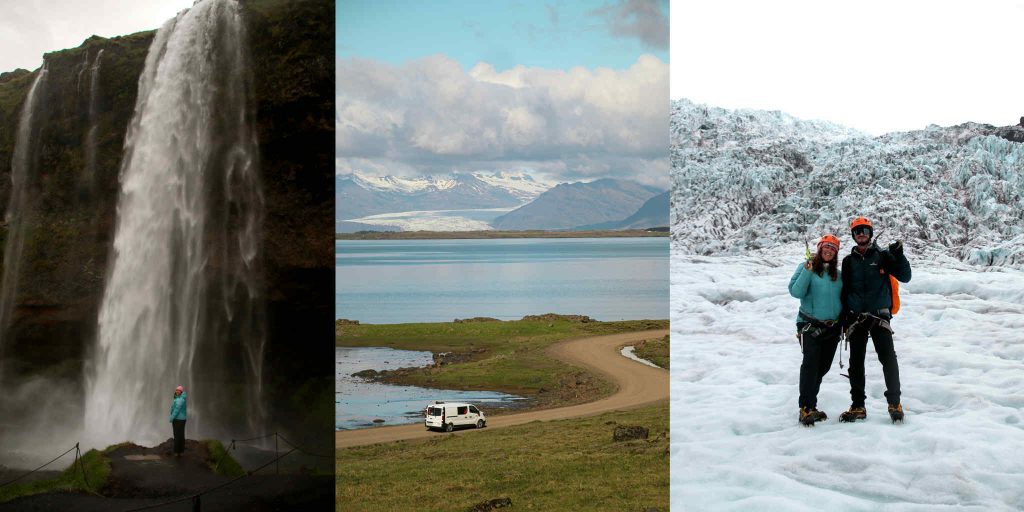
Summer travel
Secondly, if you decide to travel to Iceland during the summer months (June – August) then you will have the benefit of the Midnight Sun. This is when Iceland experiences 24 hours of daylight. Offering the unique opportunity to explore Iceland at all hours of the day. Furthermore, this is particularly beneficial for fellow photographers. As you’ll be able to visit popular spots in the middle of the night. Capturing them with no one else around. We did a lot of this!
Moreover, in summer you will have one less worry about needing a suitable vehicle. The entire ring road is 2WD friendly and the only places that a 4×4 is required is on designated B-roads. These are mostly found in the highlands. Perhaps the largest downfall of summer travel is the amount of people who will also have the same idea. Iceland can get busy around these months, and you may need to pre-book your campgrounds. Which leaves less room for spontaneity. However, there are always quiet and more secluded places to be found in Iceland.
If you are travelling to Iceland for activities such as Puffin and Whale watching, kayaking on glacier lagoons and hiking/climbing then these are only doable in summer! You will have much more access to remote areas in Iceland such as the Westfjords in summer too, as roads will be open.
Shoulder season travel
The shoulder months of September-October and April-May are also great for exploring Iceland as there will be much less tourists around. But you may still experience the benefits of each season, beautiful weather and perhaps snowy conditions in parts of the country. We decided to travel to Iceland in May and don’t regret our decision one bit, we still had very long days with the sunset at 11:30pm and the weather was brilliant for us. As you can probably tell by now, there is something to do in Iceland all year round, it just depends on what is on your bucket list.
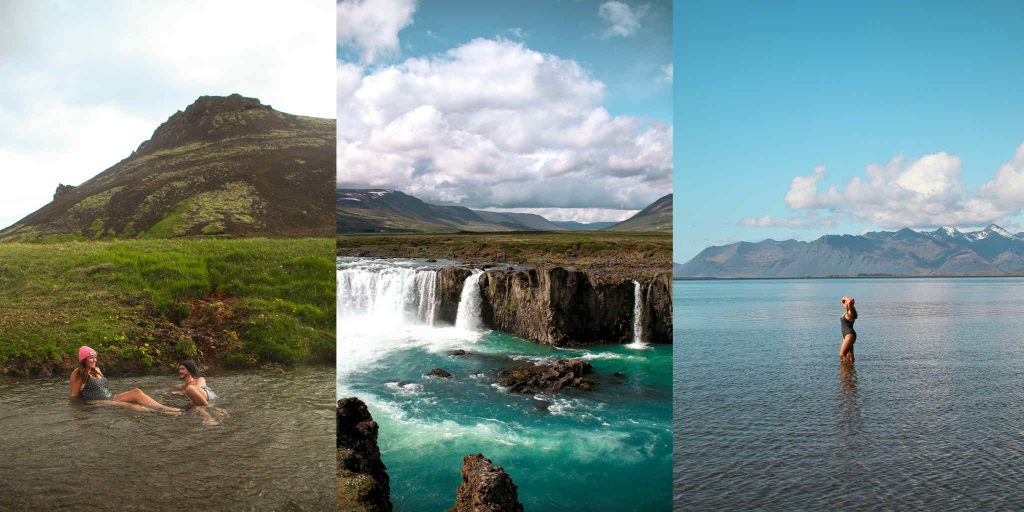
How to reach Iceland?
If you were to look on a map you might think that Iceland is super far away from the rest of Europe and is in fact much closer to Greenland, which is its neighbour. However, you will be pleased to know that reaching Iceland from mainland Europe and North America has never been easier. Iceland is conveniently positioned between the two continents, which means that combining your trip to Iceland with a visit to North America too is fast becoming the trend. We did this for our trip!
Introducing PLAY Airlines, they offer affordable flights between Europe and North America, with a self-bookable option for a stop-over in Iceland. This is the perfect way to experience Iceland, but also maybe plan that dream trip to New York too. PLAY fly from major cities all over Europe and their fares are much lower than other airlines. Just check them out if you don’t believe us.
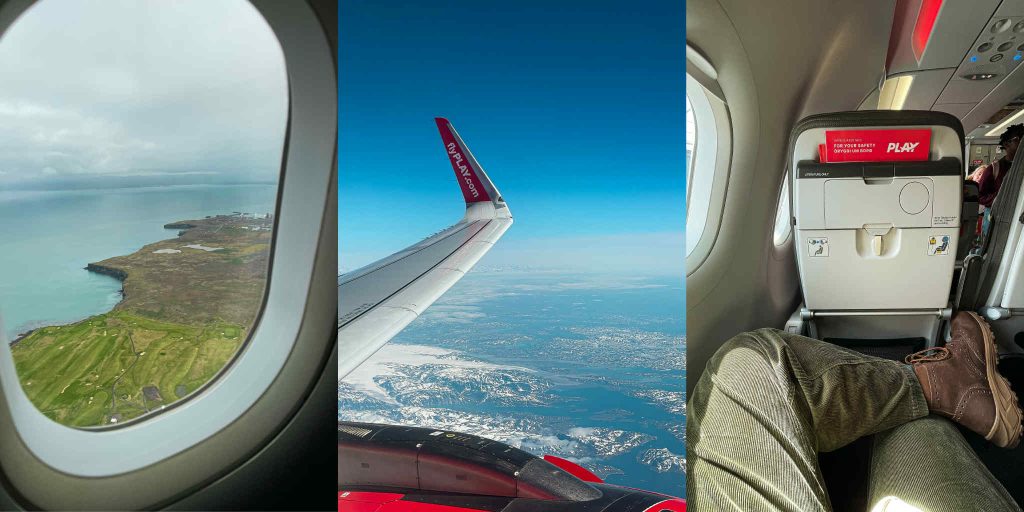
Renting a Campervan
By renting a campervan in Iceland you will absolutely be saving money. It’s no secret that Iceland is one of the most expensive countries in the world, and therefore by combining your accomodation and transport into one, is the best way to make your trip a little more affordable.
Camper Days operates as a platform for travellers to find campervans across the world, by linking you with local campervan rental companies on the ground in your destination. For Iceland we were able to rent a 3-berth fully equipped campervan, including: a stove, fridge, table, chairs and bedding. There is also a section on their website where you can add any additional items that you may need for your trip, for an extra price.
We definitely recommend that you check out Camper Days for your road trip in Iceland!
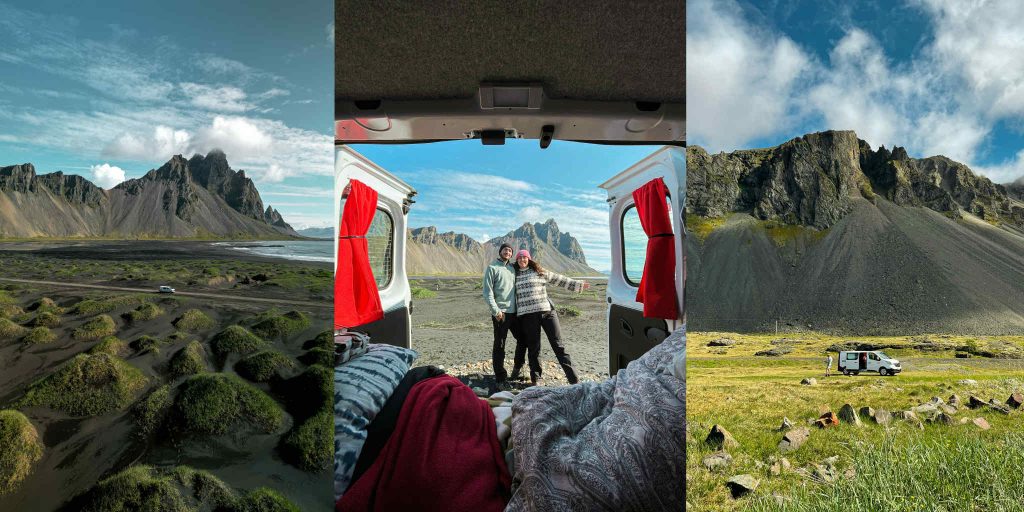
Camping in Iceland
There are a few rules that you need to be aware of when camping in Iceland. Most importantly that free or wild camping is generally illegal and you must camp on a designated campground. Campgrounds typically cost between £10-£20 per person, per night. If you are travelling in peak season (July and August), then we advise that you think about pre booking your campgrounds. For travel outside of these months, there is no need to reserve a spot. You can just show up on the day and pay to camp.
Most campsites will include your facilities (shower and toilet) in the price, but some may charge additionally for these services. If you are travelling in winter, it is worth being aware that some campsites are not open during these months and therefore you may need to plan a little more around where you are going to stay.
For more information on camping rules, campsite availability and more, then click here. This is the website we used to find every campground we stayed at in Iceland, it shows both all year-round campsites as well as just summer ones.
Currency, parking and more
Iceland uses Icelandic Krona, but the likelihood of you needing to use cash is very low. Most establishments throughout the country accept card payment, even at remote campgrounds. We spent 10 days in total in Iceland and not once did we need to use cash.
Most parking isn’t free in Iceland, when you are stopping at attractions you will need to pay for your parking, which can range from £1-£7 all day. There are apps such as Parka, that allow you to pay for parking through your phone. Other car parks may require you to visit the machine and pay there. There are a couple spots on the ring-road where payment isn’t required, such as at Dettifoss in the north. These car parks will usually have facilities too.
It is really important to be aware of the road rules; headlights must be on at all times whilst driving even during daylight hours. Speed cameras do operate throughout the country and the speed limit may be significantly lower than what you are used to in your home country. Moreover, the general rule is that you should not pull over anywhere on the side of the road, you should find a safe space to pull in and completely stop. All of these rules are in place to keep you and others safe, so it is good to be aware of them.
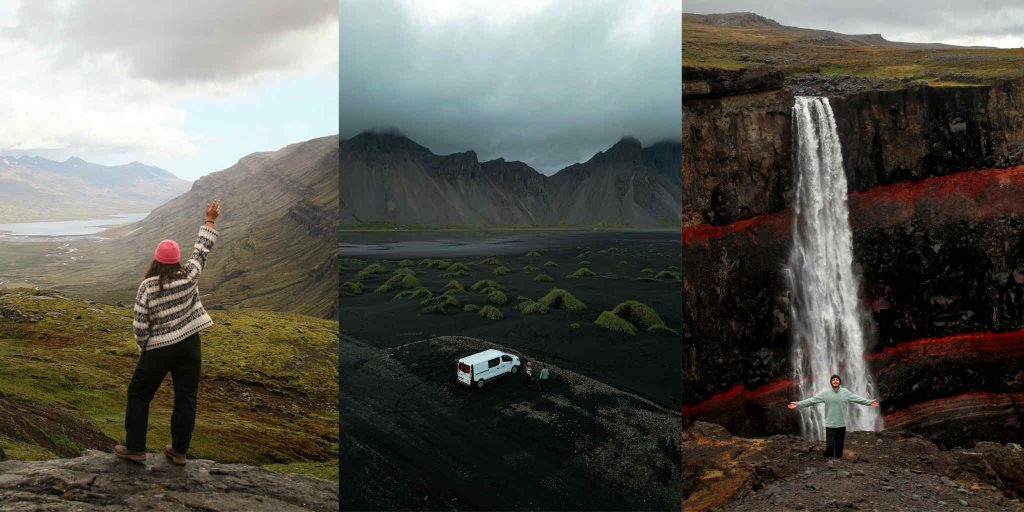
Food and Fuel
Before leaving on your trip around Iceland, it is paramount that you stock up on food and fuel. The best place to do this is either in Reykjavik or Keflavik (which is where most rental companies are based). Whilst there are petrol stations and supermarkets throughout Iceland, they are few and far between. Especially when you start to hit the more remote areas beyond the South Coast hotspots.
It will save you in both time and money by getting everything you need before you set off. The cheapest supermarkets to buy your food in are Bonus and Kronan and the cheapest fuel station is called Orkan. Furthermore, it is worth checking whether there is any free food that has been left over at your rental company office, many of them will have a shelf with leftover food to take for your trip.
Budgeting in Iceland
It is no secret that Iceland is one of the most expensive countries to travel to. If you are like us and love an affordable adventure, then you will want to keep reading. There is no sugar coating it, Iceland IS expensive! But there are some things that you can do to help keep your costs down whilst still having an incredible road trip.
How to keep costs low
Firstly, you want to make sure that you book your campervan well in advance. This is even more important when travelling during high season, as campervans do get booked up quickly. With increased demand, naturally the price will increase too. We booked our campervan with Camper Days around 3 months prior to our trip.
Secondly, do one big shop at the beginning of your trip. We mentioned before that Kronan and Bonus are the most affordable supermarkets, but the further you get away from Reykjavik the less common they are. If you are trying to keep your costs down, then definitely shop here before you set off. Choosing to cook all of your own meals will cost a lot less than eating out, which can get VERY expensive in Iceland.
Next, this one may be hard for some of you but avoid drinking alcohol. In Iceland alcohol is extremely expensive and it will eat into your budget fast. We had a sober 10 days and honestly, we didn’t even miss it, that’s coming from two people who love a glass of wine. However, if alcohol is a non-negotiable for you then the cheapest place to buy it, is in duty free just before you leave the airport.
Fortunately, Iceland is a place where you can enjoy nature, totally for free! This is the best thing about taking a road trip, as most of your activities will cost you nothing. Hiking, swimming, waterfall chasing or volcano spotting will cost you nothing to experience and this is absolutely the place to embrace that.
Finally, this is the most important point we can make for budgeting in Iceland. Travelling in shoulder season will significantly reduce your total costs on flights, campervan rental and even some paid activities. If you are looking for the cheapest time of year to travel to Iceland, then April – May and September – October are your best options.
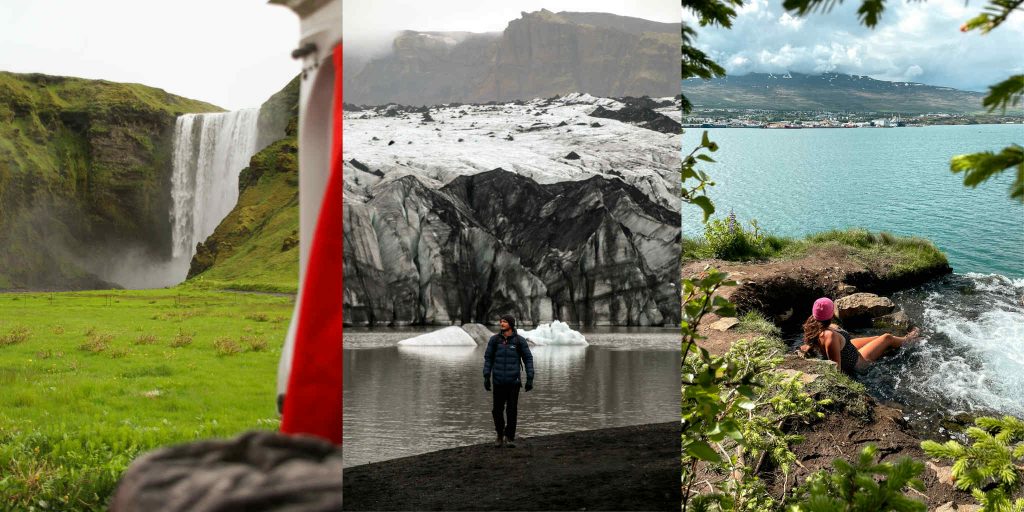
Final thoughts on road-tripping Iceland
A road trip in Iceland is without a doubt worth your time and money. It is the kind of trip that will stay on your mind even for years after, one that will touch you in ways you didn’t expect and leave you in awe of the sheer beauty that this mind-blowing country possesses.
We hope that this informative guide has given you the answers you were looking for or perhaps soothed any concerns. If there are any questions that you still have regarding a road trip in Iceland. Then please do leave them in the comments below, we are also available on Instagram.
Keep an eye out for our full 7-day Iceland itinerary. If you enjoyed reading this you may also enjoy reading more guides just like this, tap the button below for more.
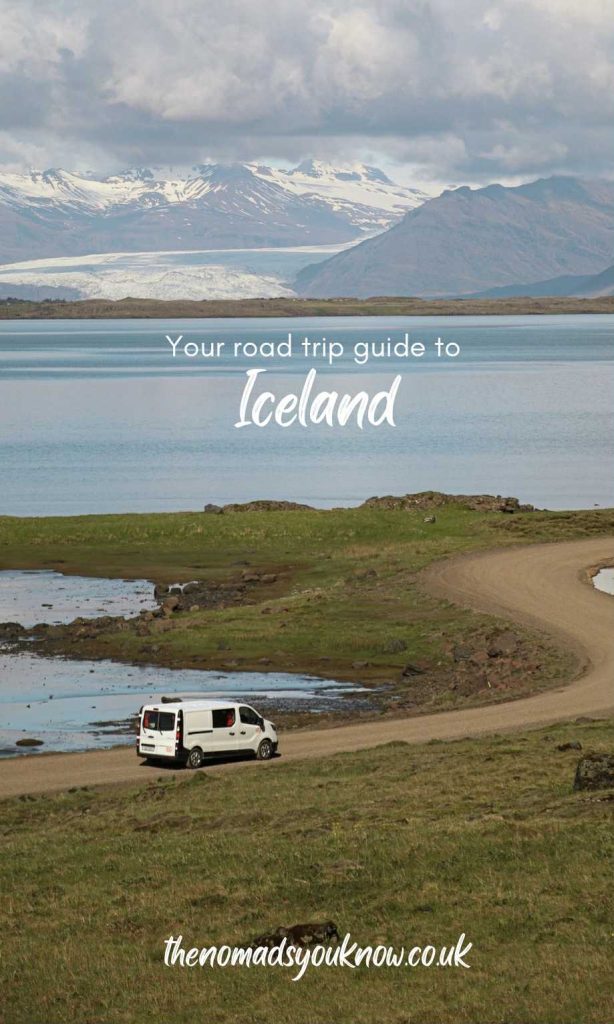




Leave a Reply